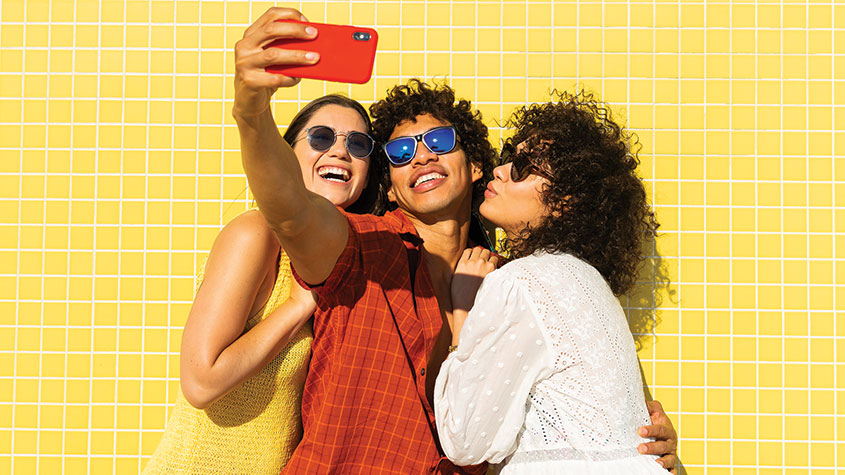A recruitment firm to bet on as the world gets back to work
Recruitment consultant Hays has been volatile, but results are strong and trends encouraging. Matthew Partridge explains the best way to play the share price.


The world of work has been turned upside down over the past few years. From millions of people being put on furlough, through the shift to homeworking and to the “great resignation”, the job market has been in constant turmoil. So it’s not surprising that the share price of recruitment firm Hays (LSE: HAYS) has been see-sawing over the past two-and-a-half year.
At the start of 2020, its shares were trading at 165p. They then plunged below 100p by late spring, before bouncing back to 120p. They then fell again to 102p in November 2020, before news of a vaccine pushed them back up to pre-pandemic levels by summer 2021. However, in the past year they have fallen to 115p.
There are obvious reasons for investors to be cautious. Rising energy prices and higher interest rates threaten to push the UK economy into recession, while labour participation levels are still lower than they were before the pandemic.
MoneyWeek
Subscribe to MoneyWeek today and get your first six magazine issues absolutely FREE

Sign up to Money Morning
Don't miss the latest investment and personal finances news, market analysis, plus money-saving tips with our free twice-daily newsletter
Don't miss the latest investment and personal finances news, market analysis, plus money-saving tips with our free twice-daily newsletter
Still, Hays should benefit from some major tailwinds that are benefiting the recruitment industry. Chief among these is a shortage of labour, which should push up the wages that people receive and means that the services of recruitment agencies are in demand. The large number of people quitting their jobs, or rethinking their career paths, is also creating churn, which means that more people have to be hired to replace them, even if the net number of jobs stays the same.
Growth opportunities
These favourable trends have put Hays’ revenue on track to surpass pre-pandemic levels this year, and the numbers are expected to keep growing strongly next year. Hays is also pursuing several strategies to boost long-term growth.
This involves making a big move to win business from small and medium-sized companies, as well as boosting its income from technology recruitment, which is now 42% above its pre-pandemic levels. It has also identified engineering and life sciences as well as emerging markets (at the moment around half its net fee income comes from the UK and Germany) as other potential growth areas that will allow it to grow faster than the recruitment industry as a whole.
Overall, Hays has a strong record of growth, with revenue increasing at a solid rate of roughly 6% a year in the five years between 2016 and 2021. It has also managed to deploy capital efficiently, earning a return on capital employed of about 10%. Despite this, it trades at only 12 times its 2023 earnings and currently has a dividend yield of 5.3%, much higher than the comparable figure for the FTSE All-Share, which is only 3%.
Still, while Hays has great potential, the fact that its share price has fallen by 5% in the past three months, and by 17% since the start of the year, means I would suggest waiting for evidence that the trend has turned the corner. As a result, I’d suggest that you hold off until the price reaches 125p before going long at £20 per 1p. In that case, I’d have a stop loss of 75p, which would give you a total potential downside of £1,000.
Get the latest financial news, insights and expert analysis from our award-winning MoneyWeek team, to help you understand what really matters when it comes to your finances.

-
 Millions of parents are missing out on up to £720 a year in extra pension cash – are you affected?
Millions of parents are missing out on up to £720 a year in extra pension cash – are you affected?A mum who narrowly missed out on the pension boost said she “never knew the government rule existed” and wants other parents to use it
-
 The most influential people of 2025
The most influential people of 2025Here are the most influential people of 2025, from New York's mayor-elect Zohran Mamdani to Japan’s Iron Lady Sanae Takaichi
-
 Why you should keep an eye on the US dollar, the most important price in the world
Why you should keep an eye on the US dollar, the most important price in the worldAdvice The US dollar is the most important asset in the world, dictating the prices of vital commodities. Where it goes next will determine the outlook for the global economy says Dominic Frisby.
-
 What is FX trading?
What is FX trading?What is FX trading and can you make money from it? We explain how foreign exchange trading works and the risks
-
 The Burberry share price looks like a good bet
The Burberry share price looks like a good betTips The Burberry share price could be on the verge of a major upswing as the firm’s profits return to growth.
-
 Sterling accelerates its recovery after chancellor’s U-turn on taxes
Sterling accelerates its recovery after chancellor’s U-turn on taxesNews The pound has recovered after Kwasi Kwarteng U-turned on abolishing the top rate of income tax. Saloni Sardana explains what's going on..
-
 Why you should short this satellite broadband company
Why you should short this satellite broadband companyTips With an ill-considered business plan, satellite broadband company AST SpaceMobile is doomed to failure, says Matthew Partridge. Here's how to short the stock.
-
 It’s time to sell this stock
It’s time to sell this stockTips Digital Realty’s data-storage business model is moribund, consumed by the rise of cloud computing. Here's how you could short the shares, says Matthew Partridge.
-
 Will Liz Truss as PM mark a turning point for the pound?
Will Liz Truss as PM mark a turning point for the pound?Analysis The pound is at its lowest since 1985. But a new government often markets a turning point, says Dominic Frisby. Here, he looks at where sterling might go from here.
-
 Are we heading for a sterling crisis?
Are we heading for a sterling crisis?News The pound sliding against the dollar and the euro is symbolic of the UK's economic weakness and a sign that overseas investors losing confidence in the country.